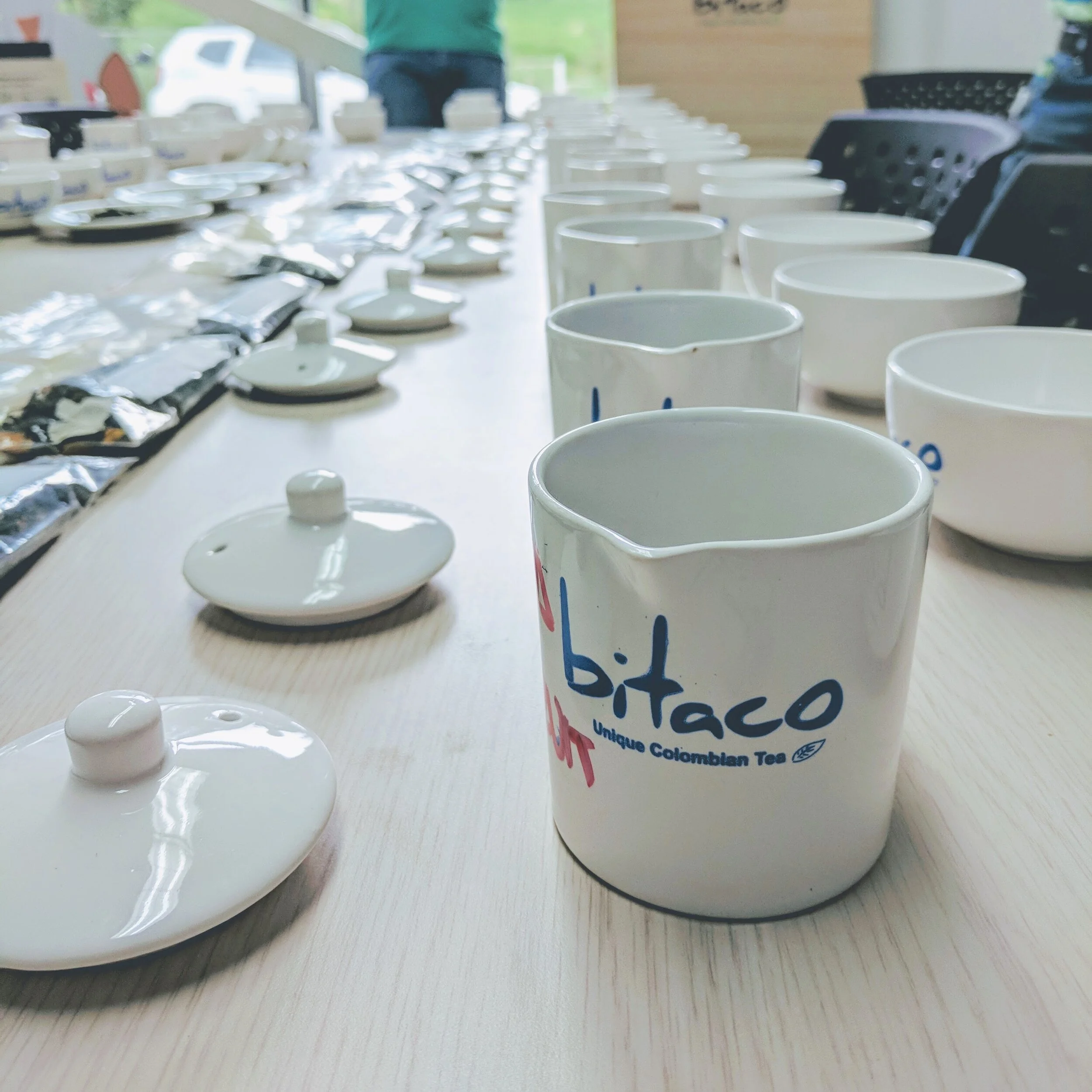Tea Tasting at Bitaco
This is an expanded section of a larger article detailing tea growing in Colombia and my travels there. You can read the full article here.
At a conference table in Bitaco's processing facility, I sat down to do a full cupping of all of their teas. Mind you, I don't find myself in a subtropical cloud forest tea tasting very often, so I was eager to warm up my palate and taste what I had been experiencing this whole trip. They, on the other hand, have to do this every day to test batches they’ve just worked on, benchmarking quality as they go.
BLACK
We start with their pure black tea. Claiming a sense of independence from the traditional Sri Lankan / Indian grading names that have dominated the production of black tea (BOP, FOP, etc), they’ve also come up with their own grades. From lower to higher grades, they sort them into Leafy 2, Leafy 1, Wiry 2, Wiry 1, Tippy 2, and Tippy 1. These grades are determined by a few factors, including the percentage of tips, if it underwent a secondary rolling, if it underwent a hotter firing, what mesh screen it was sorted by in processing, and finally overall leaf appearance, flavor, and color.
The tea is absolutely excellent, delightfully smooth and pleasantly robust. Some were incredibly sweet with notes of cocoa and honey, some fruity with notes of raisin and plum, and some brisk and tannic with notes of tobacco and wood. My favorites were the Wiry 2 for its strong brewed aroma and sweetness and the Tippy 2 for its malty richness and astringency.
The black teas were reminiscent of top-grade Sri Lankan blacks in terms of body, but with the earthy sweetness of, say, the Assam variety Taiwanese blacks (like Ruby 18) we’ve come to enjoy. And I can’t quite state what, but there was a hint something else, something strange that I’ve tasted in teas of unusual origin, like the first time I tasted a high quality Georgian black tea… an otherness of flavor. It kept me sipping and sipping to figure it out.
GREEN
They divide their green tea into three grades as well, Leafy, Wiry, and Needles. As mentioned, there is still a bit of work to do to make these really shine, but what’s apparent in the tea is the freshness and purity of flavor. Because they steam their greens, there’s a distinct nihoncha finish, albeit with different cultivars. One green really reminded me of a tamaryokucha, while another had a very novel sweet pine note. Although they’re still looking for their signature methods on finishing greens, I’d still drink these rather often.
BLENDED
Finally, they’ve tried their hand at blended teas, to better compete on the market. Although it’s clear that flavored tea is still what the majority of tea drinking customers want (on the Western market), they’re keeping their commitment to quality, so they don’t use any artificial flavors or ingredients to scent their teas. In fact, I was pleasantly surprised how mellow most of their blended teas were in comparison to blends I’ve become accustomed to. Their clever maneuver to separate themselves from the crowd is to blend the tea with ingredients native to Colombia, such as the Isabella grape and hibiscus in their “Andean Princess” blend, or cacao shells and nibs in their “Cacao Kisses” blend, one that won them top honors at the Global Tea Championships in 2017 for a flavored black tea.
* Title image by author
To read more on Colombian tea, check out the expanded articles:
